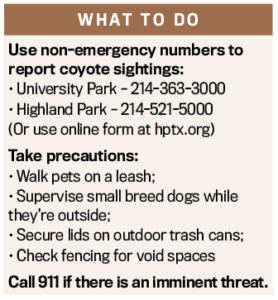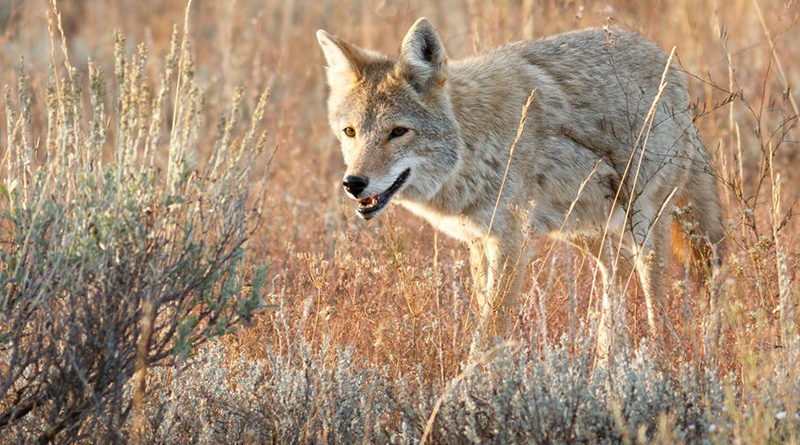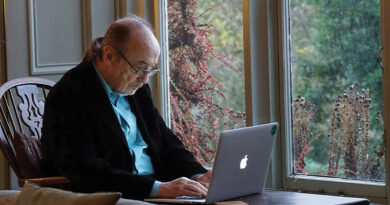Officials Hope Residents Will Help Identify Coyote Patterns
Reports of coyotes roaming the Park Cities aren’t new, but the fear Lindsay Ballota’s son has for the bushy-tailed scavengers is.
“Our second-grade son is afraid to go in the backyard because he’s afraid a coyote will get him,” she told the Highland Park Town Council a few days after a coyote snatched the family pet.
(ABOVE: Coyotes will eat nearly anything, including snakes, garbage, and pets. Courtesy photo)
The attack in the 3300 block of Dartmouth Avenue occurred around 9 p.m. Jan 23 while the Ballotas’ 13-pound dog, Nixon, was alone in the backyard. Nixon didn’t survive.
Highland Park and University Park officials issued warnings soon after, encouraging residents to take precautions and report coyote sightings, especially attacks or other aggressive behaviors.
Both municipalities plan to use the reports from residents to identify coyote territories and travel patterns and intend to work with federal and state agencies to trap and remove animals if that’s deemed appropriate.
“This is the first time since I‘ve been here, they’ve come into a backyard.” -Lt. Lance Koppa
Lt. Lance Koppa, community relations/public information officer for the Highland Park Department of Public Safety, said coyotes could roam a large area.
“They run Hackberry; they run Turtle Creek; they have been seen west of Preston Road,” he said.
“They’ve been here as long as I’ve been working here,” said Koppa, who joined the town nearly 19 years ago. “This is the first time since I‘ve been here, they’ve come into a backyard.”
Town leaders met Feb. 5 in closed session to discuss deployment of personnel and devices for wildlife management but took no action when they returned to open session.
While a specialist with Texas Wildlife Services, a Division of the U.S. Department of Agriculture, is working with the town, the agency generally views it as “not good practice to remove wildlife, even from urban areas,” according to the town website, hptx.org. “Wildlife are not domesticated animals and are a vital part of the ecosystem, even in heavily populated areas.”
Wildlife Services describes coyotes as looking like small collie dogs with erect pointed ears, slender muzzle, and a bushy tail. Adults weigh between 20 and 45 pounds. Most sightings occur close to sunrise and sunset.
“A true scavenger, the coyote will eat just about anything,” the agency reports. That includes “snakes and foxes, doughnuts and sandwiches, rodents and rabbits, fruits and vegetables, birds, frogs, grass and grasshoppers, pet cats and cat food, pet dogs and dog food, carrion, and just plain garbage.”

University Park officials warned against leaving out food sources that could attract coyotes: pet food, rotting fruit under trees, bird seed on the ground, and trash left accessible when garbage containers are not properly secured.
Up the Dallas North Tollway in Collin and Denton counties, Frisco has made news with coyotes attacking joggers. That type of aggression is considered unusual because coyotes are typically wary of people.
“If you see a coyote in your yard, wave your arms, shout and spray it with a water hose,” University Park recommends on its website, uptexas.org. “It is likely to leave the area quickly after any of these actions.”










Urban coyotes are dangerous predators, killing pets, game and small livestock and attacking adults and children. They need to be removed, not pandered to by PETA. The USDA will send in Federal Trappers to successfully remove this vermin and keep them removed.
Those “vermin” are part of the food chain, helping to keep the rodent, snake, and insect populations in check. We humans are invading their territory. Healthy coyotes will gladly avoid human interaction. Unfortunately, they do sometimes attack and kill small domestic animals such as dogs and cats, just as those same dogs and cats also attack and kill birds, squirrels, lizards, etc. If the coyotes become a legitimate danger to humans then, yes, they should be removed.